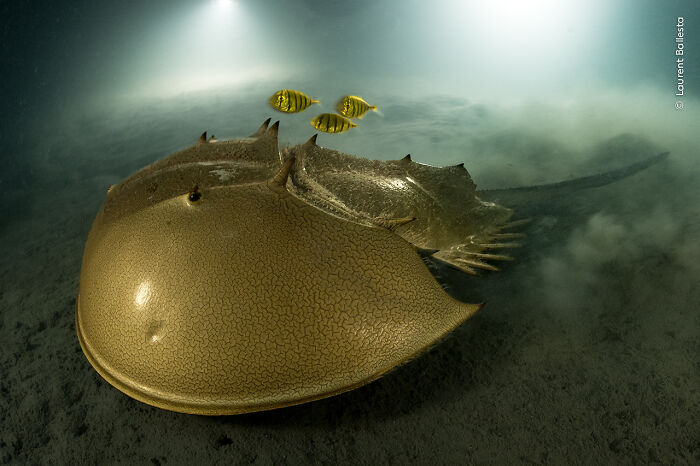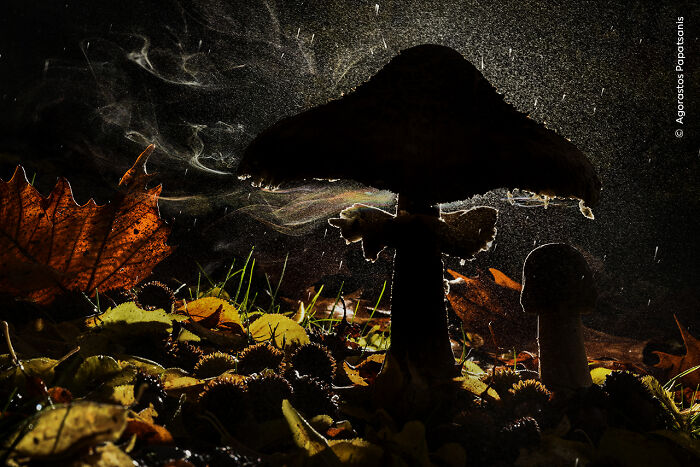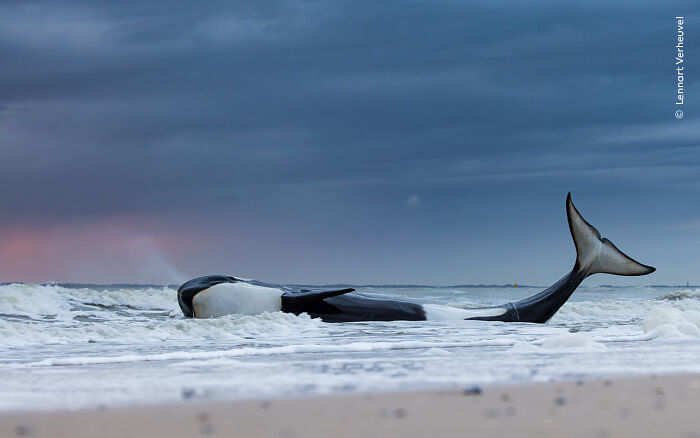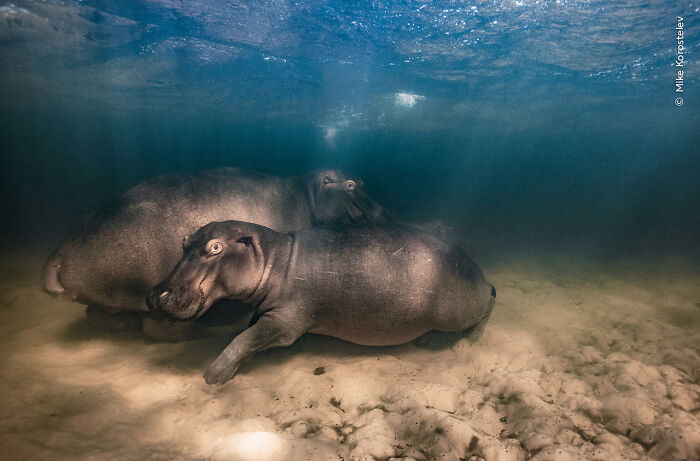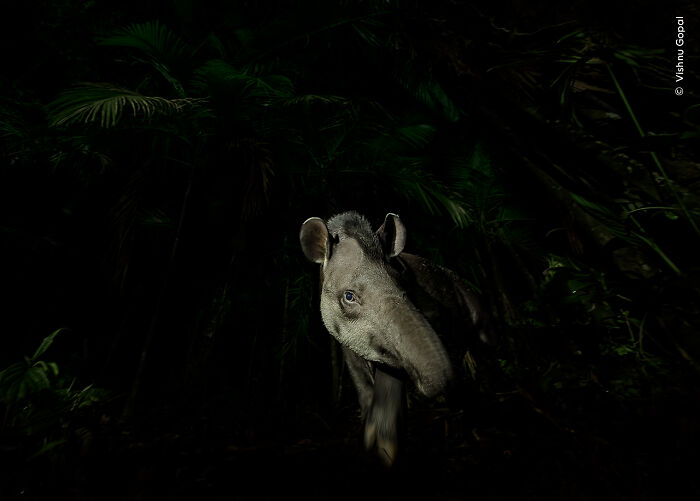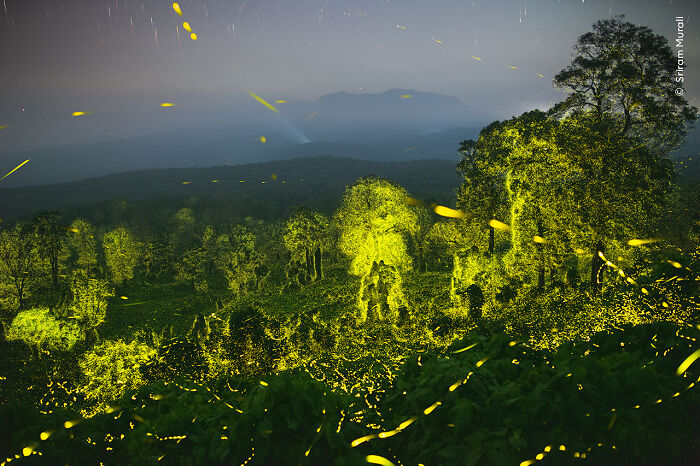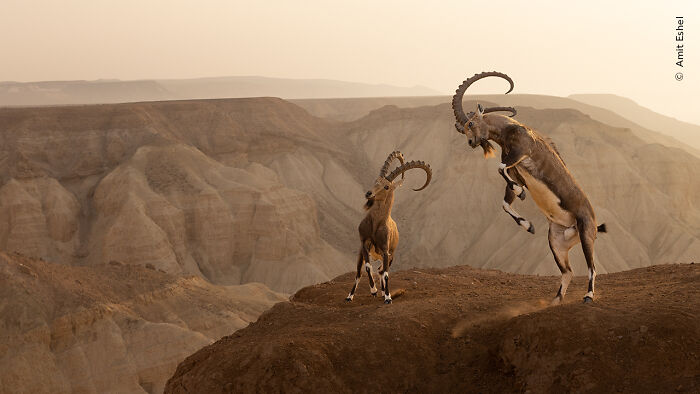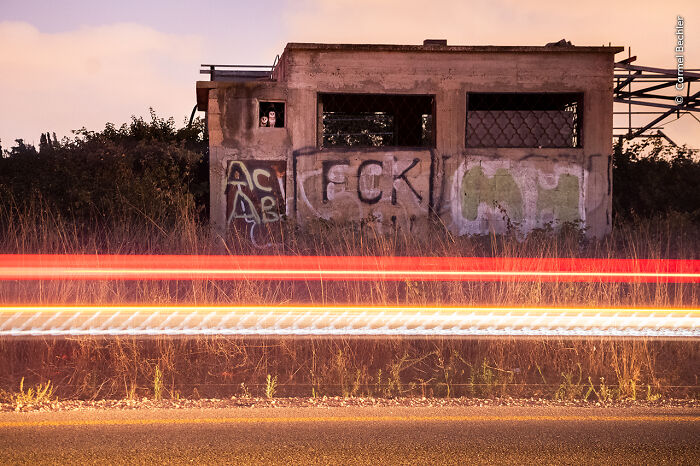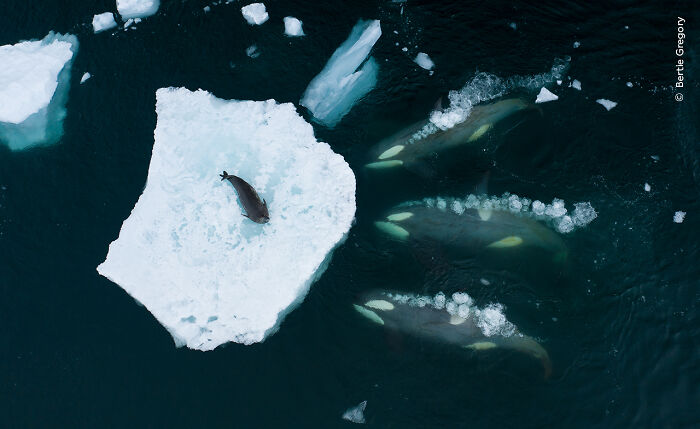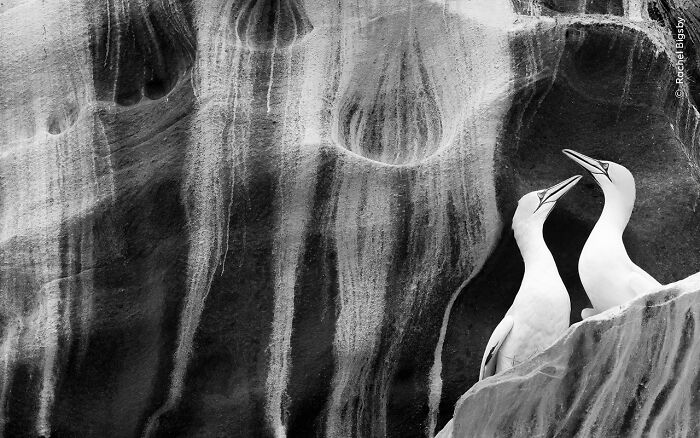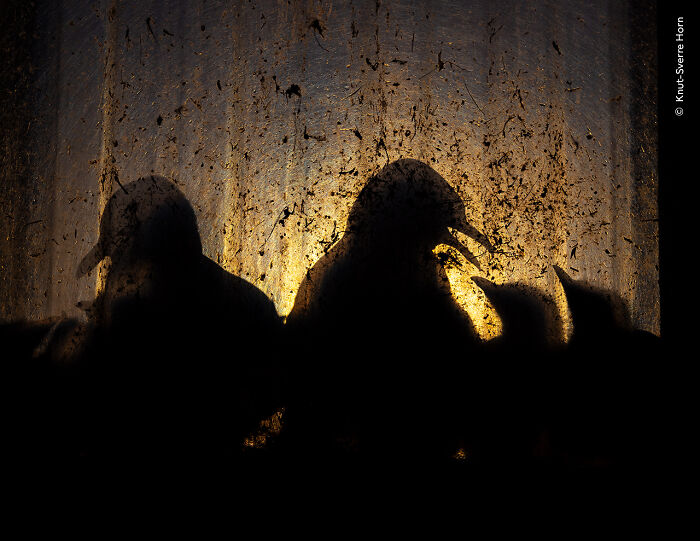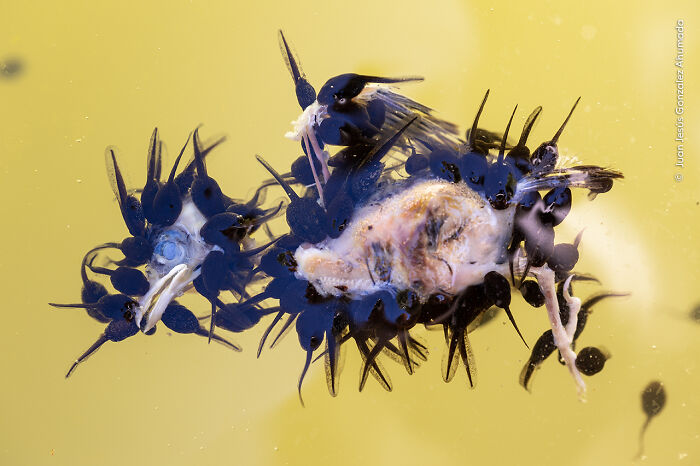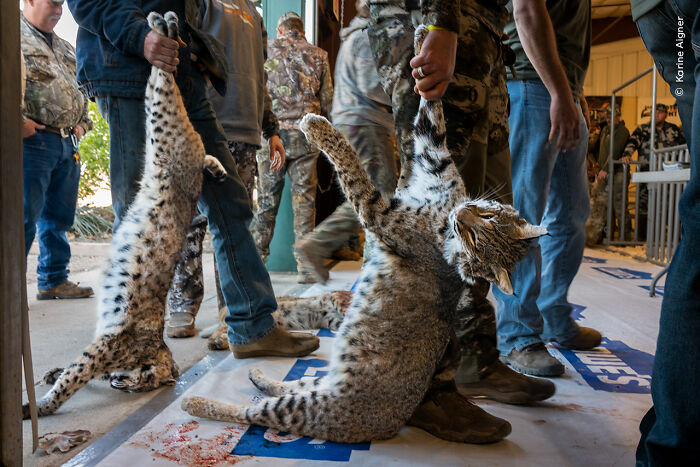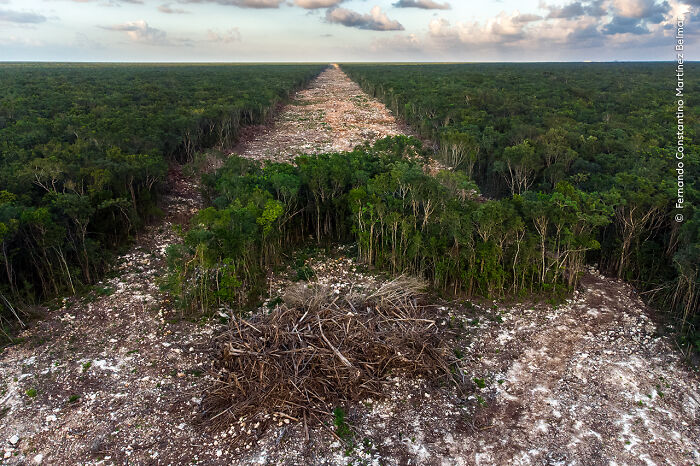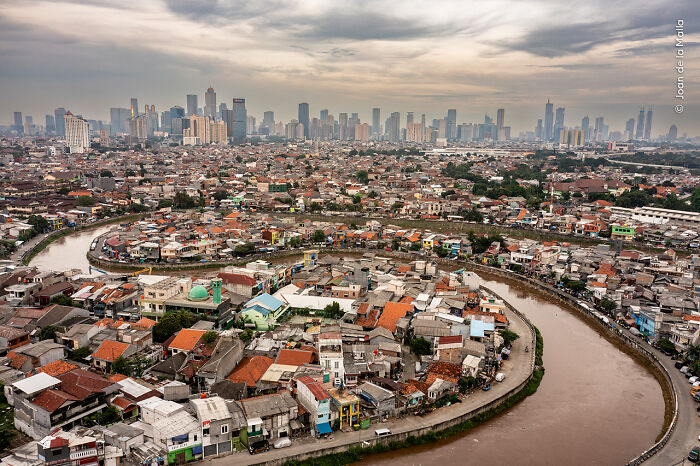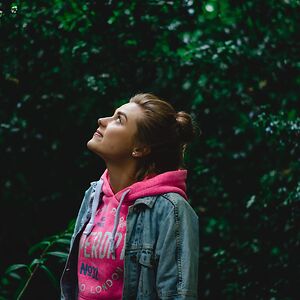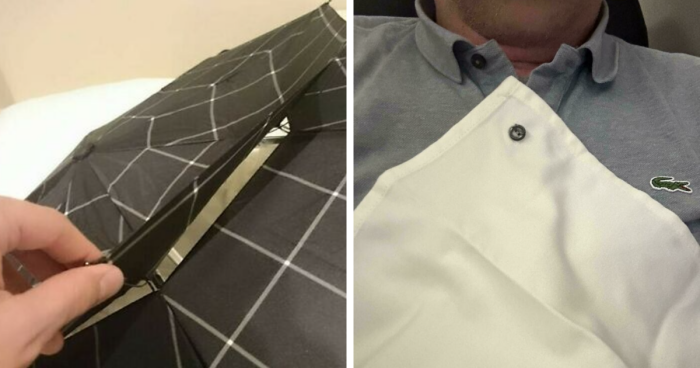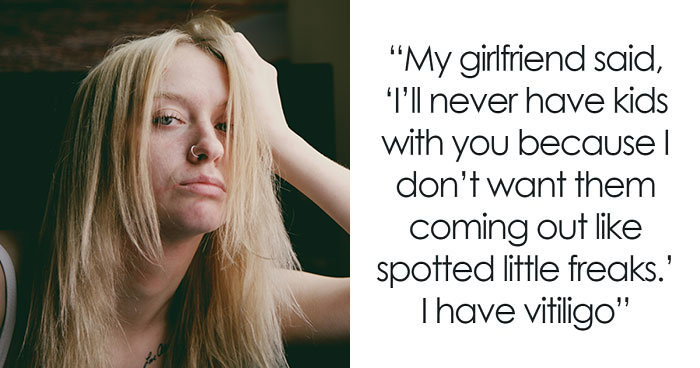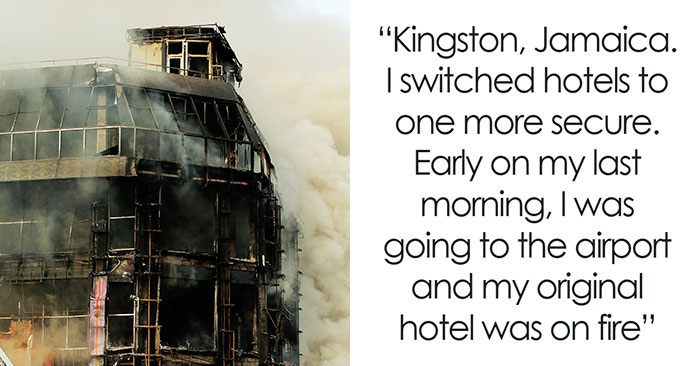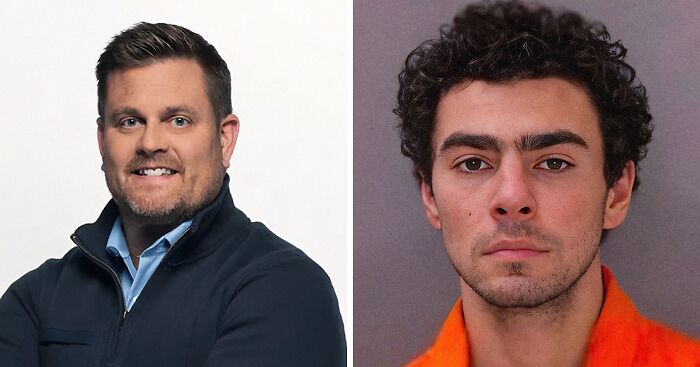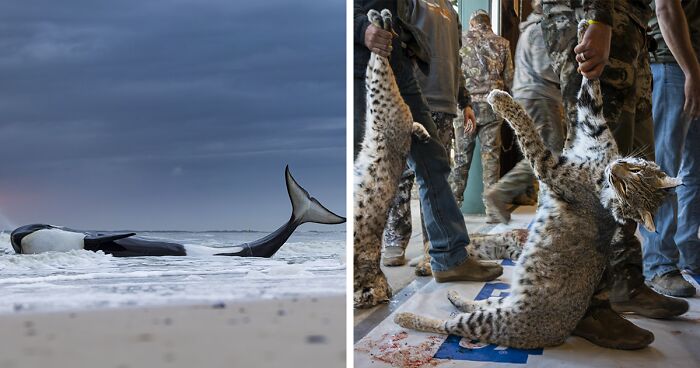
74Kviews
Here Are The 15 Winning Images Of The Wildlife Photographer Of The Year Competition
InterviewSelected from 49,957 entries from 95 countries, the winners of the Natural History Museum's prestigious Wildlife Photographer of the Year competition were revealed at an awards ceremony in South Kensington.
Wildlife Photographer of the Year was founded in 1965 by BBC Wildlife Magazine, then called Animals. The Natural History Museum joined forces in 1984 to create the competition as it is known today. The annual competition and touring exhibition is now run and owned by the Natural History Museum, London.
The flagship Wildlife Photographer of the Year exhibition featuring the awarded images will open on Friday 13 October 2023 at the Natural History Museum in London.
Bored Panda reached out to photographers - Laurent Ballesta, Karine Aigner and Lennart Verheuvel, winning in three categories, so make sure to scroll down and read what we’ve found out about awarded works.
More info: nhm.ac.uk | Instagram | Facebook | twitter.com
This post may include affiliate links.
The Ancient Mariner By Laurent Ballesta, France, Winner, Portfolio Award
Laurent Ballesta / Wildlife Photographer of the Year
‘The Golden Horseshoe’
A tri-spine horseshoe crab moves slowly over the mud. Its golden protective carapace hides 12 appendages. Above the horseshoe crab, a trio of juvenile golden trevallies are poised to dart down for edible morsels plowed up by its passage.
Laurent Ballesta went looking for horseshoe crabs in the protected waters of Pangatalan Island in the Philippines.
Marine biologist and photographer Laurent Ballesta has dedicated his life to exploring the oceans and revealing their wonder through art. He has led a series of major expeditions, all involving scientific mysteries and diving challenges, and all resulting in unprecedented images.
The tri-spine horseshoe crab has survived for more than 300 million years but now faces habitat destruction and overfishing for food and for its blood, used in the development of vaccines. But, in the protected waters off Pangatalan Island, there is hope for its survival.
We contacted Laurent Ballesta, who got the Adult Grand Title Winner of 2023 Photographer of the Year with his breathtaking portfolio “The Ancient Mariner”. Ballesta’s photographs beautifully capture the vibrant colors and textures of the horseshoe crab. We asked him to describe the technical aspects of how he achieved this stunning image. Laurent shared with us: “When horseshoe crabs dig and plow their muddy field, the largest and most active horseshoe crabs are escorted by opportunistic golden juvenal trevallies, always on the lookout for prey buried in the sediment and brutally exposed by the digging of horseshoe crabs.
The biggest challenge in capturing this image was to find the right speed and aperture. On the one hand, I wanted to freeze the horseshoe crab, as well as enhance its brightness. On the other hand, I wanted to avoid freezing the little fishes, to give the idea that they are speedy while the horseshoe crab is very calm. My goal was to show this contrast between them: one powerful and slow, the others speedy and fragile.”
Last Breath Of Autumn By Agorastos Papatsanis, Greece, Winner, Plants And Fungi
Agorastos Papatsanis / Wildlife Photographer of the Year
Agorastos Papatsanis reveals the magic of a fungus releasing its spores in the forest.
Long fascinated by fungi, Agorastos used his silver photographic umbrella to stop his camera from getting wet and covered his carefully positioned flash with a plastic bag. The colorful touches come from refraction of the light passing through the spore-laden air currents and rain.
Parasol mushrooms release spores from the gills under their cap. Billions of tiny spores travel – usually unseen – in the air currents. Some will land where there is moisture and food, enabling them to grow networks under the forest floor.
Last Gasp By Lennart Verheuvel, The Netherlands, Winner, Oceans: The Bigger Picture
Lennart Verheuvel / Wildlife Photographer of the Year
Lennart Verheuvel shows the final moments of a beached orca.
Lying on its side in the surf, this orca had only a short time left to live. Initially rescued, it soon was stranded again on the beach and died. A study later revealed that not only was it severely malnourished, it was also extremely sick.
Research shows that orcas in European waters have the world’s highest concentrations of polychlorinated biphenyls. These banned chemicals can persist for many years in marine food webs, weakening immune systems and reducing breeding success in whales, porpoises and dolphins.
I f*****g hate humans .... This magnificent creature should have lived to 60 + years old, instead of being exposed to the s**t that we chuck into the oceans. Shame on you big businesses for causing this , even more shame on us allowing this to happen by buying the s**t these companies make.
Asked about the challenges the photographer faced while photographing these creatures in their natural habitat, Ballesta answered: “The islet of Pangatalan is at the end of a huge bay. Its waters are not transparent, but somewhat green: the color of waters rich in plankton and organic matter, everything you need to nourish and heal a wounded ecosystem, to accompany the convalescence of a reef. For most of the images, it was hard to find the right moment to take the shot. The water is muddy and makes it difficult to find horseshoe crabs. Also, for some shots I wanted to create a mud cloud in the foreground, but not too thick to hide everything. I had to do them again and again and again… because when it becomes too muddy, you have to be very patient and wait a very long time for the mud to come back down.”
Hippo Nursery By Mike Korostelev, Russia, Winner, Underwater
Mike Korostelev / Wildlife Photographer of the Year
Mike Korostelev reveals a hippopotamus and her two offspring resting in the shallow clear-water lake.
For over two years Mike has been visiting the hippos in this lake and knew they were accustomed to his boat. He spent just 20 seconds under water with them – enough time to get this image from a safe distance and to avoid alarming the mother.
Hippos produce one calf every two to three years. Their slow-growing population is particularly vulnerable to habitat degradation, drought, and illegal hunting for meat and ivory from their teeth
Face Of The Forest By Vishnu Gopal, India, Winner, Animal Portrait
Vishnu Gopal / Wildlife Photographer of the Year
Vishnu Gopal records the moment a lowland tapir steps cautiously out of the swampy Brazilian rainforest.
Finding hoofprints on a forest track near his campsite, Vishnu waited nearby. An hour later, the tapir appeared. Using a long exposure and torchlight to capture texture and movement, Vishnu framed the tapir, head turned to the side, as it emerged from the forest.
Lowland tapirs rely on the forest for their diet of fruit and other vegetation and in turn the tapirs act as seed dispersers. This important relationship is threatened by habitat loss, illegal hunting and traffic collisions.
Tapirs are such adorable creatures. It's sad to think what will become of them.
We were curious in what ways Laurent Ballesta hopes his photograph will contribute to raising awareness about horseshoe crabs and their conservation. The photographer said: “I'm very cautious about affirming the idea that illustrating wildlife contributes to its preservation. That may have been true a few decades ago. Today, we're flooded by millions of images on social media and I'm not sure it works that well. The 'beauty of nature' has also become an object of consumption; worse, it can engender lust, even more than respect. At least, that's what I think today. So, over the last few years, I've tried to show neither the beauty of nature, nor the horrors we inflict on it. I've tried to show, as far as I've been able, the mysteries of nature that lie behind appearances in which aestheticism is merely a distraction. The real feeling that these images should provoke in us is confusion, a feeling of incomprehension, a mixture of fascination and questioning of what makes this harmonious assembly of differences that we call biodiversity. After all, this is what moves me to take diving risks, to push the limits of the discipline and I wonder if this is a third, less experienced way, of making an impression and gaining more awareness of the wild world: to open a small window, for a brief moment, on what is beyond us, on what we don’t understand.
I have the impression that this feeling of approaching the unknown can create more respect than the simple contemplation of aesthetic images... I believe that today we need knowledge much more than we need beauty. Images can bring knowledge, and that's what I'm trying to do, or at least I am trying to reflect the extent of our ignorance through images.”
Lights Fantastic By Sriram Murali, India, Winner, Behaviour: Invertebrates
Sriram Murali / Wildlife Photographer of the Year
Sriram Murali showcases a night sky and a forest illuminated with fireflies.
Sriram combined fifty 19-second exposures to show the firefly flashes produced over 16 minutes in the forests near his hometown. The firefly flashes start at twilight, with just a few, before the frequency increases and they pulse in unison like a wave across the forest.
Fireflies, which are in fact beetles, are famous for attracting mates using bioluminescence. Darkness is a necessary ingredient in the success of this process. Light pollution affects many nocturnal creatures, but fireflies are especially susceptible.
Life On The Edge By Amit Eshel, Israel, Winner, Animals In Their Environment
Amit Eshel / Wildlife Photographer of the Year
Amit Eshel witnesses a dramatic cliffside clash between two Nubian ibex.
After hiking to a vantage point on the clifftop, Amit slowly crept closer, using a wide-angle lens to set the action of two clashing Nubian ibex against the dramatic backdrop. The battle lasted for about 15 minutes before one male surrendered, and the pair parted without serious injury.
In the run-up to the mating season, part of the males’ coat darkens, and their neck muscles thicken. Rivals will raise up on their hind legs and ram their heads together. Their horns sometimes break as they collide.
We got in touch with Karine Aigner, the author of the series “The Unprotected“, and the winner of the Photojournalist Story Award in Wildlife Photographer Of The Year. We asked Aigner, what initially drew her to document the annual hunting competitions in Texas. The photographer shared with us: “In 2017, I had the opportunity to document a wild female bobcat, and over the years, several different litters of her kittens. That lead me to meeting two other bobcats, and between the three—who trusted me in their presence, I was let into a world that not many have ever seen. I learned so many things that debunked the negative narratives around this predator.
These animals were non aggressive towards me, they cared for their young, they played, they had communication between each other, and really, were not much different than your average house cat. In my research to learn all that I could about them, I quickly found that this species, along with coyotes, mountain lions, foxes and more, has no protections at all in the state of Texas. They are actually classified as vermin, and can be killed 24/7 365 days a year with no permission needed: and they are the target of predator contests, which I’d never heard about before. And as any good journalist does, I wanted to see what these events were all about.”
Owls’ Road House By Carmel Bechler, Israel, Winner, 15-17 Years
Carmel Bechler / Wildlife Photographer of the Year
Carmel Bechler discovered several barn owls in an abandoned concrete building near a busy road.
Returning to where he had spotted a barn owl the previous year, Carmel and his father used the family car as a hide. He made the most of the natural light and used long exposure times to capture the light trails of passing traffic.
Israel has the densest barn-owl population in the world. A national project has provided nesting boxes near agricultural fields, encouraging owls to nest near farmland. Because the owls hunt rodents that eat seeds and crops, this arrangement has reduced the use of pesticides on farms.
Whales Making Waves By Bertie Gregory, UK, Winner, Behaviour: Mammals
Bertie Gregory / Wildlife Photographer of the Year
Bertie Gregory tracks a pod of orcas as they prepare to ‘wave wash’ a Weddell seal.
Bertie took two month-long expeditions searching for orcas. ‘We spent every waking minute on the roof of the boat, scanning,’ he says. After battling high winds and freezing conditions, he captured this remarkable behavior with his drone.
These orcas belong to a group that specializes in hunting seals by charging toward the ice, creating a wave that washes the seal into the water. With rising temperatures melting ice floes, seals are spending more time on land, and the behavior of ‘wave washing’ may disappear.
In her work, Karine Aigner documented various aspects of hunting competitions. We asked the photographer what role she believes photography plays in shedding light on such event. Aigner said: “These events are in rural areas that many people don’t live in. It’s one thing to hear about these endeavors. But unless you are there in person, it’s very difficult to understand and visualize what they are actually about. Photography is the tangible truth between the two worlds; it brings one world, to the other. It forces us to look at what we otherwise don’t see, or don’t want to see. Photography is the only way sometimes to shed light on a subject.”
The Art Of Courtship By Rachel Bigsby, UK, Winner, Natural Artistry
Rachel Bigsby / Wildlife Photographer of the Year
Rachel Bigsby frames a gannet pair against the guano-painted curves of sandstone cliffs.
From her boat in turbulent sea swell, Rachel realized that achieving her vision of showcasing gannets set against the towering cliffs would be tricky. But as the boat aligned with the rocks, she spotted this pair ‘isolated on a lower ledge, intertwining their necks and framed by streaks of guano’.
Each summer the Isle of Noss hosts more than 22,000 northern gannets, which return to breed on the ledges carved by the elements. This species was hardest hit by the 2022 avian flu outbreak.
Birds Of The Midnight Sun By Knut-Sverre Horn, Norway, Winner, Urban Wildlife
Knut-Sverre / Wildlife Photographer of the Year
Knut-Sverre Horn offers a glimpse of kittiwake chicks illuminated in an abandoned factory.
From his vantage point inside an abandoned fish-processing factory, Knut-Sverre kept watch on the black legged kittiwakes tending to their chicks on the windowsill. As midnight approached, the low summer sun struck the north-facing window, sharpening the birds’ silhouettes and giving him the image that he wanted.
Kittiwakes naturally nest on the narrow ledges of high, steep coastal cliffs. Recently numbers have plummeted, and some have headed for urban areas due to shortages of food caused by warming oceans and pollution.
We were wondering what responses the photographer received from viewers who saw her impactful series. Karine told us: “Reaction to the work has been overwhelming. Viewers are perplexed, saddened and horrified. Some have come to me with tears in their eyes. Because the Wildlife Photographer of the Year platform is International, a different set of eyes is now on these events. Very few people know these hunts/contests/carnivals happen and exist, despite the American belief that this is “common knowledge.” It's not.
The United States is often seen as a leader in conservation ideas, but yet, this is legal in over forty US states. The species targeted in these events are native, and some of them apex predators that help maintain a healthy ecosystem. Without them, the systems fall apart.”
The Tadpole Banquet By Juan Jesús Gonzalez Ahumada, Spain, Winner, Behaviour: Amphibians And Reptiles
Juan Jesús Gonzalez Ahumada / Wildlife Photographer of the Year
Juan Jesús Gonzalez Ahumada watches as toad tadpoles feast on a dead fledgling sparrow.
The drama unfolded near Juan’s home when a newly fledged sparrow launched itself from a nest on his neighbor’s roof and fell into a nearby pond, where it drowned. Juan had to pick his moment to show the tadpole formation and the sparrow’s eye.
Common toad tadpoles have varied diets consisting of algae, vegetation, and tiny swimming invertebrates. As they grow larger, they become more carnivorous so when a banquet like this arrives, they take full advantage.
The Unprotected By Karine Aigner, USA, Winner, Photojournalist Story Award
Karine Aigner / Wildlife Photographer of the Year
‘Big business’
Contestants line up to have their bobcats weighed in the March 2022 West Texas Big Bobcat Contest, the highest-paying predator-hunting contest in the USA. There are a number of prizes, one of which is for the heaviest bobcat. In 2022 the winner of that category took home US$35,530 (around £28,000).
For some people in the USA, hunting wildlife is a pastime. In Texas, while there are strict regulations covering ‘game’ species, certain predators such as bobcats, mountain lions and coyotes have no protection and can be killed at any time and by any means.
In this portfolio, Karine delves deep into the contests and festivals that celebrate the killing of these unprotected and maligned species, exploring their relationship with humans.
We have also contacted Lennart Verheuvel, whose image “Last Gasp”, got him first place in the Oceans - The Bigger Picture category of the Wildlife Photographer Of The Year. An image captured by a photographer from the Netherlands speaks more than thousands of words. We wanted to know more about the circumstances surrounding the rescue efforts and the moments leading up to the orca's stranding on the beach. Verheuvel shared with us: “When I got the message I drove over to the place where the Orca was supposed to be stranded. When I arrived the Orca had been pushed back into the sea at first.
However, minutes later it turned out that the Orca had only washed back onto shore 2 kilometres further. There I lay in the surf and that's where I saw it. The Orca laid mostly on its side but did one time turn back on its belly. As the afternoon progressed the Orca got visibly weaker. The Orca was measured by rescue workers, but in the end it was judged to be impossible to get the Orca back into the sea and the Orca was also too large to take into a rehabilitation facility.”
Asked to tell us more about challenges or difficulties the photographer encountered while documenting this event, Lennart Verheuvel answered: “For the photography the main challenge was to get a sharp picture as light was fading fast and I did not have a tripod. So I balanced my camera on the sand and took many pictures.”
The Tourism Bulldozer By Fernando Constantino Martínez Belmar, Mexico, Winner, Photojournalism
Fernando Constantino Martínez Belmar / Wildlife Photographer of the Year
Fernando Constantino Martínez Belmar shows the devastating path of a new cross-country tourist railway line.
To reach a point from where he could launch his drone, Fernando was guided through four kilometers (2.5 miles) of an underground cave system. The result of his challenging trek was this image.
The government-funded railway line connecting tourist destinations brings economic benefits to Mexico’s southeast, but it also fragments ecosystems, threatens protected reserves and archaeological sites, and impacts Indigenous peoples. While trains are a more environmentally friendly form of transport, conservationists warn of devastating consequences.
The Dead River By Joan De La Malla, Spain, Winner, Wetlands - The Bigger Picture
Joan de la Malla / Wildlife Photographer of the Year
Joan de la Malla provides a bird’s-eye view of the polluted Ciliwung river winding through Indonesia’s capital, Jakarta.
To find a time when lower air pollution allowed a clear view, Joan returned to the scene over several days. His image documents one of the most polluted rivers in the world and illustrates the growing global issue of river pollution.
Plastic rubbish, human waste, agricultural fertilizers and factory waste are suffocating the Ciliwung river. As a result, Jakarta’s residents are having to use groundwater for drinking water. This has resulted in widespread subsidence and the city is now sinking.
There is hope. Pasig River in the Philippines faced a similar situation and was declared biologically dead. It is now recovering slowly. The Ocean Cleanup's river interceptors have done quite a bit of good work to tackle the plastic problem in developing countries. Now we need public awareness and bigger fines on polluting industries.
Lastly, we were wondering how Verheuve sees his role as a photographer in contributing to the understanding of marine conservation issues. Lennart explained: “I think photography can have a lot of positive impact on conservation because one picture can bring a particular animal challenge or devastation to the environment under attention and makes it possible for the viewers to get a personal connection to what is happening on the picture. In marine conservation, there is especially a responsibility for the photographer to show what is beneath the surface as not many people get to take a good look under water. However, the welfare of the marine environment is of enormous importance to the world's health and also to human welfare.
For me photography is something I do besides my job to relax and being able to watch amazing animals brings me a lot of joy. Usually my first objective is try to see an amazing animal and wherever I can I also try to take pictures that have a deeper meaning. Next year I hope to see whales under water which is something I am really looking forward to.”
So many sad stories. I have to agree with the above: I f*****g hate people.
This comment is hidden. Click here to view.
Load More Replies...So many sad stories. I have to agree with the above: I f*****g hate people.
This comment is hidden. Click here to view.
Load More Replies...
 Dark Mode
Dark Mode 

 No fees, cancel anytime
No fees, cancel anytime 











